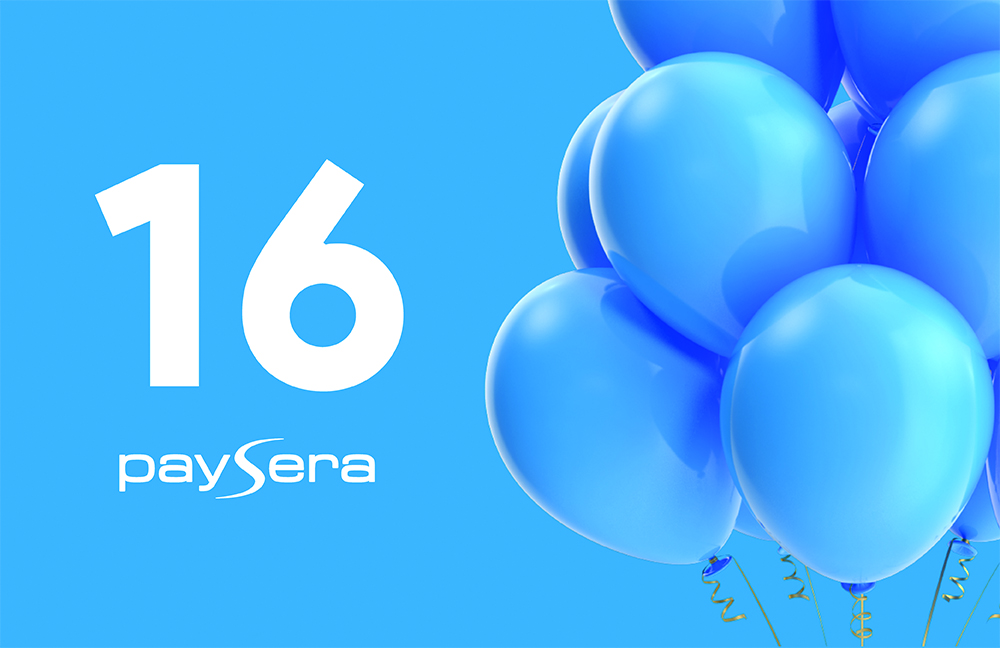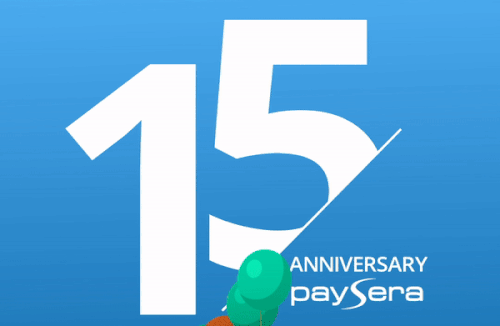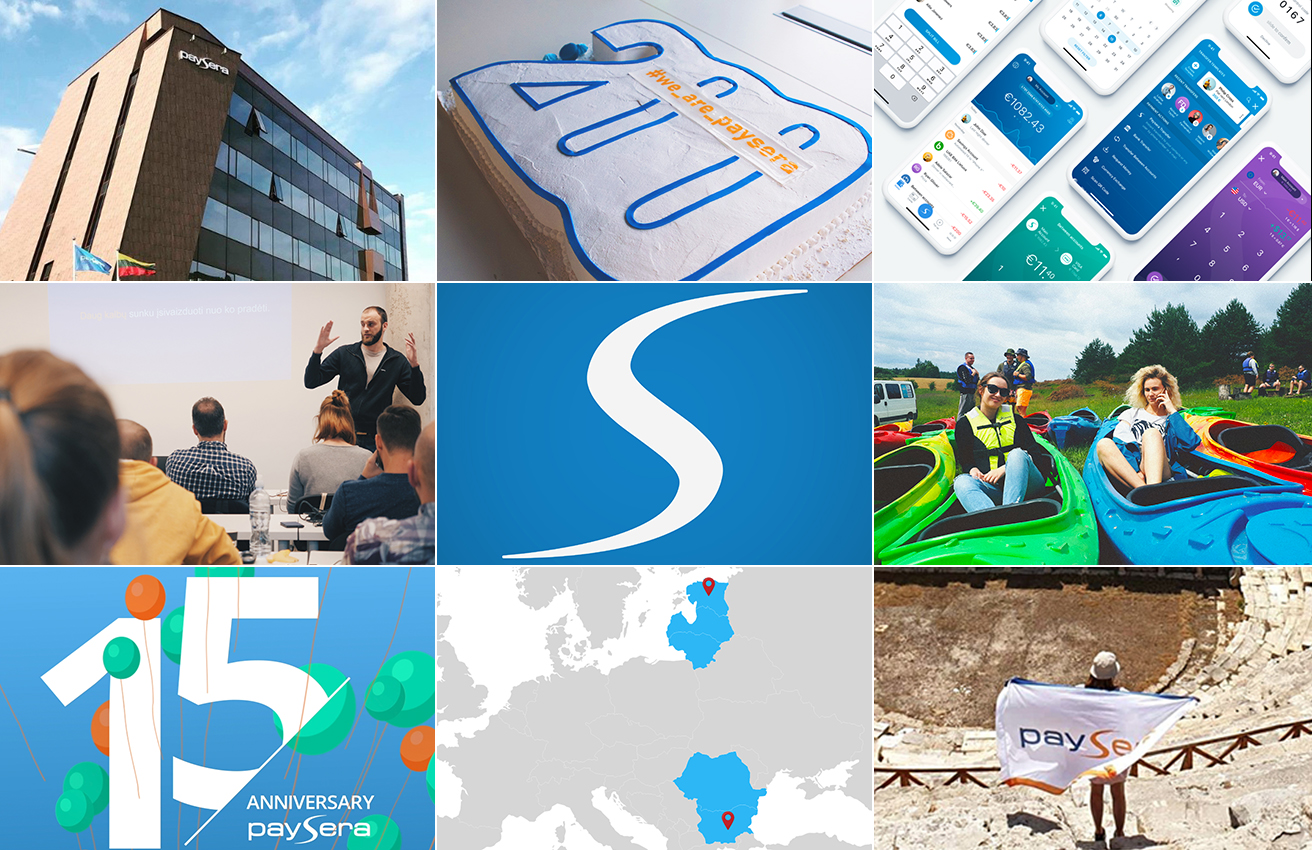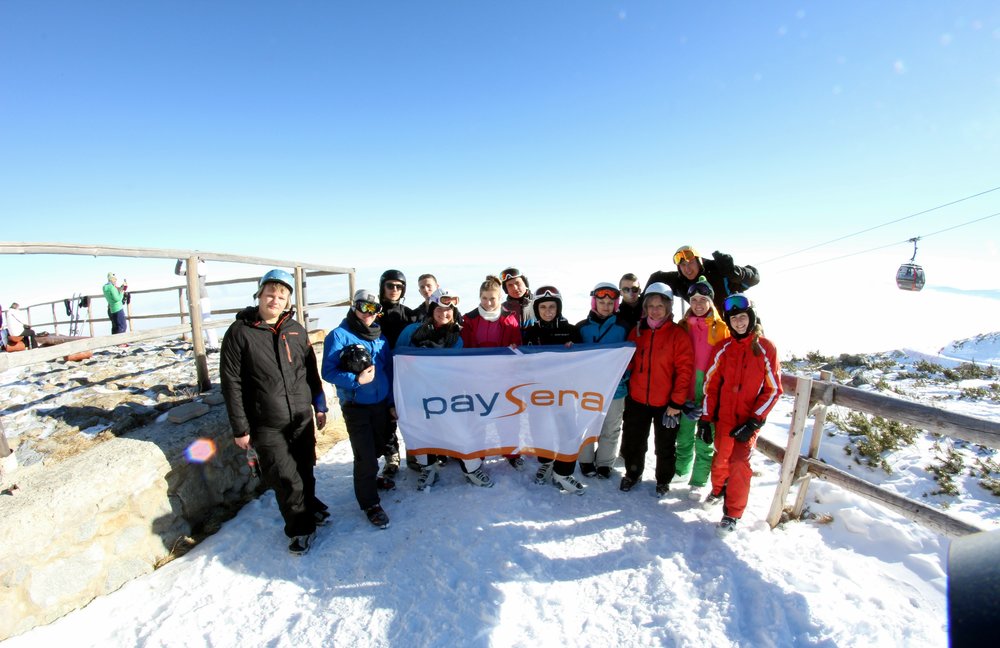A brief history of Lithuanian fintechs
 Paysera CEO Vytenis Morkūnas
Paysera CEO Vytenis Morkūnas
To mark Paysera’s 16th birthday, the company’s CEO Vytenis Morkūnas reviews the short yet rich history of fintechs in Lithuania. From the very first payment cards to the first attempts to trade physical gold online – all of it fits into a period spanning no more than 30 years.
The fintech industry started making headlines only a few years ago, but financial technologies themselves date back to the times when even the telephone was not yet invented.
There is no clear agreement on what counts as the very first fintech invention. Different sources claim different tools. One of them is the pantelegraph. Have you ever heard of it? That’s right.
The pantelepgraph was a predecessor of the fax machine and was able to send small images. It was used by banks to check the authenticity of clients’ signatures. This invention, brought to life by Giovanni Caselli, was operating between Paris and Lyon.
The fintech industry started making headlines only a few years ago, but financial technologies themselves date back to the times when even the telephone was not yet invented.
But what is the history of fintechs in Lithuania? I got interested in this question prior to marking the 16th birthday of Paysera (still accepting birthday wishes by the way). And so I decided to investigate and see what footprint Paysera left in the fintech sector during the time of its existence so far. And I’m quite happy with what I managed to find.
This short history of Lithuanian fintechs is open to corrections and does not aspire to be used in the history books. It simply reflects subjective views on what seems to be of major importance in the fintech timeline of independent Lithuania. Some services mentioned below are not “purebred” fintechs (e.g. m.Parking, Taxify), however, their arrival brought some major changes to the market, so they were included in the timeline. There are some more events and companies that were not initially financial institutions but also pushed the fintechs forward – among them are Huracan Coffee and Karkle festival, which went cashless and so set a brave example for others.
A brief history of Lithuanian fintechs
1993. Vilniaus bankas (now SEB) issues the first payment cards. 💳
1995. First ATM in Lithuania (Vilniaus bankas).
2000. First online banking (by Snoras and Hansabank – now Swedbank). 💻
2001. Swedbank introduces the Bank link service to collect money online.
2004. Paysera was founded (then – EVP International).
2006. Viena sąskaita was founded.
2007. Omnitel (now Telia) starts issuing mobile signatures. 📲
2009. People can check their credit score online via Mano Creditinfo.
2010. The first payment gateway company mokejimai.lt (now – Paysera Checkout) starts operating.
2012. The Bank of Lithuania issues the very first electronic money institution licence in Lithuania – Paysera becomes the first Lithuanian EMI. 🥇
2012. TransferGo enters the market.
2013. You can now use m.Parking to pay for parking your car. 🚘
2014. Paysera is the first to introduce QR payments in Lithuania.
2014. The beginning of the end of cash in cabs: Taxify (now– Bolt) enters the market.
2014. Paysera becomes the first to open clients’ accounts remotely. 🌍
2015. The first P2P lending platforms enter the market – Savy, Finbee, Paskolų klubas.
2016. Swedbank introduces the first contactless cards.
2016. Revolut starts distributing payment cards.
2017. The Minister of Finance approves an action plan for the development of the fintech industry. 💪
2017. Paysera becomes the first to provide the payment initiation service to e-shops.
2017. The start of Smart-ID.
2017. FINTECH HUB LT – fintech association was founded.
2017. After introducing banking services packages, incoming transfer fees are repealed (fun fact – Paysera never had them in the first place).
2018. The payment services directive PSD2 comes into force.
2018. Huracan Coffee becomes the first physical store to go cashless and accept only card payments.
2018. MoQ is founded (… and closed in 2020).
2018. The music festival Karkle has a cashless sale zone. 🎤
2019. Open banking gains momentum: when logging in to your Swedbank account you can see your SEB account details.
2019. MoQ introduces tipping via an app.
2019. Lithuania scores 4th in Findexable's international fintech country ranking.
2019. Revolut moves clients’ accounts to Lithuania – Lithuanian institutions gain access to information about their clients.
2020. VGTU and MRU universities introduce a fintech study course.
2020. Pixevia – the first store without checkouts and cashiers starts operating in Vilnius.
2020. The Bank of Lithuania introduces the first digital collector coin in the world – LBCOIN.
2020. Paysera becomes the first fintech that sells physical gold online and allows people to take it home. 🏆
2020. Revolut starts selling gold and silver without the option to take it home.
2020. The Lithuanian parliament is on the way to introducing laws enabling companies in the process of establishment to open cumulative accounts in electronic money institutions.
I did not include everything in this Lithuanian fintech history timeline. And I’m not sure if I should have, since the title states that it’s a short history after all.

And for the very end… On the 13th of October Paysera celebrated its 16th birthday. So how are we doing today?
Paysera: the largest EMI in Lithuania (according to the Bank of Lithuania)
Team: 250+
Geography: 6 states
Clients: 520k
Transfers: worldwide
Payment gateway: ~90 % of Lithuanian e-shops choose us; online users continuously growing
Financial operations: EUR 5,9 bln.(2019)
Income: EUR 11 mln.
Profit: EUR 2 mln. (2019), and in 2020 we are approaching our 16th year in a row of being profitable!



October 2019 • 4 min read
15 gimtadienis – 15 faktų apie Paysera
Spalio vidurys – šventė – Paysera gimtadienis. Šiais metais tai dar ir gražus apvalus 15 jubiliejus. Ta proga dalinamės 15 faktų apie mus, mūsų kasdieninį gyvenimą ir kitus dalykus, kurių, neabejojame, nežinojote!
Read more
February 2020 • 3 min read
Mūsų TOP momentai 2019-ais!
Sako, kad apžvelgti praėjusius metus labai naudinga – ne tik tobulėjimui, bet ir pasidžiaugimui, kiek gero per juos įvyko. Iš tiesų, kartais to stabtelėjimo taip pritrūksta. Tai einam pasivaikyti Instagram madų ir sakome S(TOP) tiems ypatingiems 9-iems praėjusių metų momentams!
Read more





